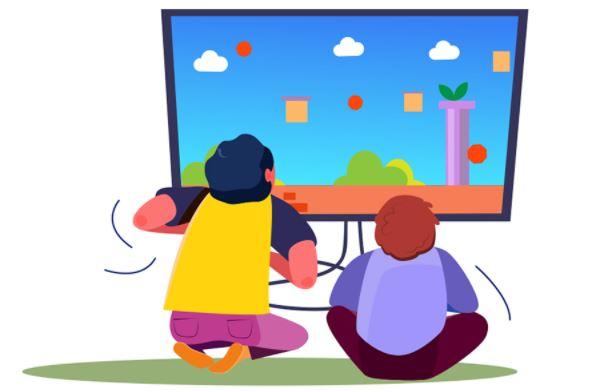Editor’s Note: The California Partners Project conducted a statewide listening tour with California mothers, parents, and caregivers to understand how they navigated the integration of technology and devices into most aspects of their children’s lives. These evolving toolkits and best practices are meant to meet parents where they are. Finding Balance with Gaming is the eighth toolkit.
Online, multiplayer games are played by millions of young people. Many caregivers shared their deep concerns about the intensity with which their children and teens play online games and noted the difficulty they faced pulling their kids away from gaming.
For parents today, the experience of socializing through gaming is new. A recent survey shows that youth report gaming is both helpful for their social lives and can present risks such as harassment. However, through conversation and connection, gaming can be part of a diverse set of developmental experiences if other recreational opportunities continue.
Tips from child psychiatrist Dr. Michael Tsappis of the Clinic for Interactive Media and Internet Disorders and the Digital Wellness Lab
Tip 1: Set clear expectations in collaboration with your child.
Have family conversations about the appropriate parameters for gaming. Be careful not to limit windows for gaming to small periods of time. That could increase tension and stress for kids. Instead of very limited, specific times, decide how you will adjust based on individual family circumstances. One mom shared with CPP that she allows her teenage son to have one hour of gaming for every hour of physical activity. This arrangement motivates her son to exercise, and the terms of the agreement are clear.
Tip 2: Write down the family plan for gaming, have it available for reference, and update regularly.
It is helpful to refer to a Family Media Plan agreement you created together. By looking at the agreement, you can debate about the agreement, instead of the particulars of the situation.
Tip 3: Offer a diverse set of opportunities for social interactions that don’t involve gaming.
Youth may not be aware of how much time they spend gaming. Create a pie chart together showing how they use the hours of their day. Instead of judging time spent gaming, help them brainstorm how to add other activities. (Digital Wellness Lab)
Tip 4: Consider whether an expert could help.
The pandemic has forced many families to grapple with kids spending more time on tech. In many cases this is not Problematic Interactive Media Use. However, if your child’s gaming activities are causing an inability to function and presenting as a compulsion of a repeated non-productive behavior that your child can’t stop, bring this concern to your trusted pediatrician. In most cases you might compare gaming to binge-eating. We need food, but a balanced diet of a variety of nutritious options is best. Abstinence doesn’t need to be the goal; instead make time for other interests.
Resources
https://www.adl.org/hateisnogame#results
https://www.healthychildren.org/English/media/Pages/default.aspx/#wizard
https://digitalwellnesslab.org/parents/video-games/
https://digitalwellnesslab.org/parents/pimu/
As California mother’s, we are bringing these toolkits to you through a cross-collaborative campaign. San Francisco Bay Area Moms is proud to be working with Ventura County Mom Collective and Inland Empire Mom Collective. We too, want to “ensure our state’s media and technology industries are a force for good in child development” (part of California Partners Project Mission Statement). #TechTips4CaliMoms




















